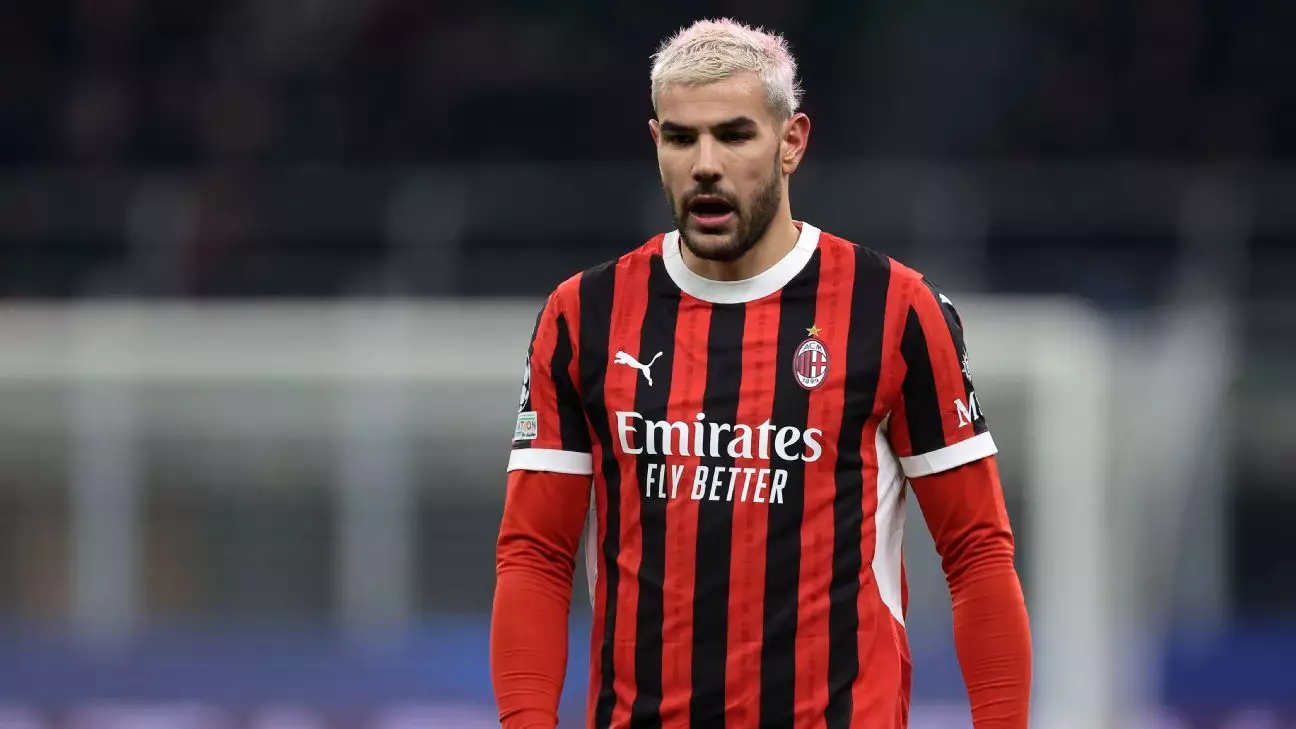As January transfers loom closer, the European football market is rife with speculation and tactical reshaping as clubs reassess their squads in pursuit of greater success. This article delves into the recent developments surrounding prominent players and clubs, highlighting the strategic decisions that could reshape teams and leagues in the 2024 summer transfer window.
AC Milan, a bastion of Serie A prowess, is reportedly ready to let go of left-back Theo Hernandez, as revealed by Gazzetta dello Sport. The club has expressed displeasure with Hernandez’s recent performances, leading to the conclusion that renewing his contract is now perceived as “impractical.” The decision places the 25-year-old French international in a precarious position, sparking discussions regarding his future.
Milan seems to be in a transitional phase, evaluating its squad to bolster competitive viability. By making Hernandez available for transfer, they acknowledge the need for rejuvenation, creating potential for new signings that align more closely with their strategic vision. If no buyers emerge, the left-back could depart on a free transfer come the summer of 2026, showcasing the club’s need to act decisively.
In the Premier League, Newcastle United is eyeing a significant acquisition in the form of Burnley goalkeeper James Trafford. Recent reports from the Daily Mail suggest optimism regarding his arrival at St. James’ Park come summer. At just 22 years old, Trafford has established himself as a promising talent, notably achieving 11 consecutive clean sheets in the Championship.
Newcastle’s interest reflects a structured effort to enhance their goalkeeping options, aligning with their long-term project to achieve sustained success in both domestic and continental competitions. Such a move could be indicative of a broader strategy to develop a formidable core of players that blend youth and experience—essential for a competitive edge in an increasingly challenging league.
The future of Napoli striker Victor Osimhen also piques interest globally, as reports by Calciomercato suggest that he will likely depart from the Serie A club in the coming summer. With a reputed release clause estimated between €70 million to €75 million, hopes of securing his services are high among several suitors in the Premier League and even in Saudi Arabia.
Osimhen’s recent performance has been remarkable, scoring his 20th goal of the season against AZ Alkmaar, solidifying his place as a key figure in Napoli’s attacking lineup. However, he seeks to maintain his current salary of €12 million per season, which may complicate matters for clubs intending to sign him. His situation not only showcases his individual prowess but also underscores the growing international interest in elite talent across Europe.
Contrarily, Roma forward Paulo Dybala appears enthusiastic about extending his stint with the Giallorossi. Following the automatic renewal of his contract, which binds him to the club until the summer of 2026, there are talks of extending it by another year, showcasing both parties’ alignment in their ambitions. Dybala’s two-goal performance that recently guided Roma past Porto in the Europa League encapsulates his value to the squad.
This dynamic illustrates the importance of player commitment to a club during strategic transitions, emphasizing how Dybala’s presence could anchor Roma in their quest for competitive relevance in both domestic and European arenas, particularly in the wake of fluctuating performances.
Additionally, the transfer radar has focused on Shakhtar Donetsk’s attacking midfielder Georgiy Sudakov, who has turned heads across Europe with his stellar performances. Multiple clubs, including Napoli and various Premier League outfits, are reportedly monitoring the 22-year-old, who has contributed to 10 goals in 16 league appearances.
Sudakov represents the next generation of emerging talent in European football, attracting interest owing to his skill and potential for future development. His circumstances provide a window into how clubs are increasingly looking to integrate youth talent to build a foundation for sustained success, as their evolving strategies dictate a shift towards a younger, more dynamic squad composition.
The landscape of European football is constantly evolving, driven by strategic decisions during the transfer window. Clubs are recognizing the importance of adapting to the changing dynamics in player performances, contract situations, and the overall competitive environment, laying the blueprint for the future of football.

